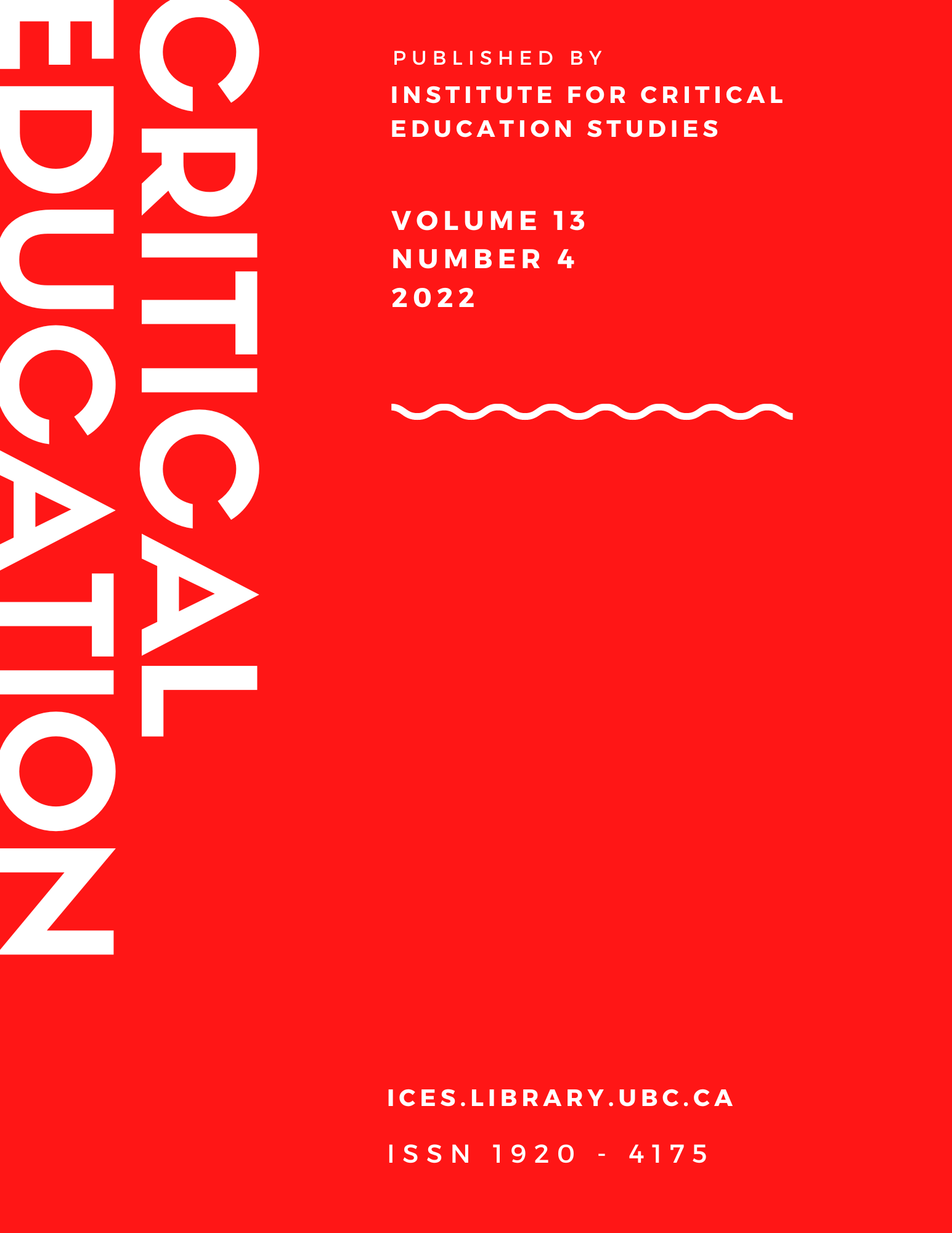‘No Cuts to Education’
The Story of a Protest Movement
DOI:
https://doi.org/10.14288/ce.v13i4.186603Keywords:
teachers' unions, collective bargaining, strikes, public educationAbstract
The return of the Conservatives to power in Ontario, Canada in 2018 saw major attacks on the province’s K-12 education system, centering on increases to class size and mandatory e-learning courses for students which, taken together with other budget cuts, amounted to the elimination of thousands of teaching and support staff positions, as well as threats of privatization. These policies provoked widespread resistance from education workers, who as union members and grassroots activists conducted extensive outreach to build public support, engaged in job actions, and participated in the largest strikes in Ontario for decades as part of the campaign for “No Cuts to Education.” The start of the COVID-19 pandemic in the spring of 2020 ended the movement. This article assesses the victories and defeats of this key struggle in defense of public education. It considers the strategies and tactics of provincial and local union leadership and activist members, in which the battle with the provincial government for the alignment of public support was widely recognized as being of decisive importance. The author uses autoethnographic research as a local union leader, interviews with active union members, policy documents, union statements and media coverage to construct an historical account. This experience has relevance for studies of teachers’ resistance to the neoliberalization of education, as well as social movement unionism and its challenges.
Downloads
Published
Issue
Section
License
Copyright (c) 2022 Paul Bocking

This work is licensed under a Creative Commons Attribution 4.0 International License.
Authors who publish with Critical Education agree to the following terms:
- Authors retain copyright and grant the journal right of first publication with the work simultaneously licensed under a Creative Commons Attribution License that allows others to share the work with an acknowledgement of the work's authorship and initial publication in this journal.
- Authors are able to enter into separate, additional contractual arrangements for the non-exclusive distribution of the journal's published version of the work (e.g., post it to an institutional repository or publish it in a book), with an acknowledgement of its initial publication in this journal.
- Authors are permitted and encouraged to post their work online (e.g., in institutional repositories or on their website) prior to and during the submission process, as it can lead to productive exchanges, as well as earlier and greater citation of published work (See The Effect of Open Access).












